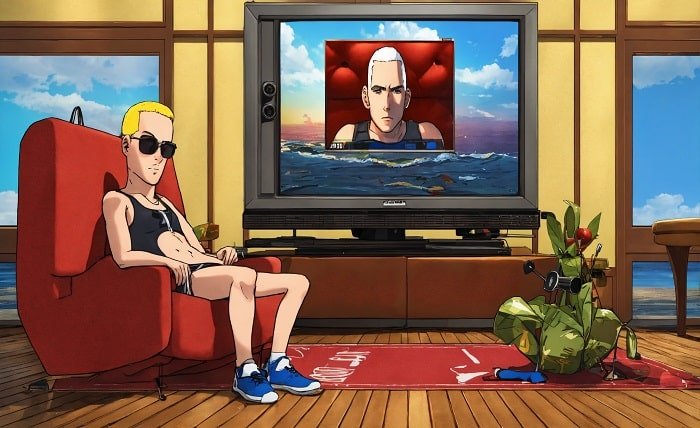Now That’s TV: The Evolution of Television Entertainment

Introduction
Television has been a cornerstone of entertainment for decades, evolving from simple black-and-white broadcasts to the complex, on-demand digital experiences we enjoy today. “Now that’s TV” encapsulates the dynamic and ever-changing landscape of television, reflecting the continuous advancements in technology, storytelling, and viewer engagement. In this blog post, we’ll explore the history, genres, technological innovations, and future trends that define what makes TV so captivating.
The Golden Age of Television
“Now that’s TV” often brings to mind the Golden Age of Television, a period from the late 1940s to the early 1960s when TV became a dominant cultural force. Iconic shows like “I Love Lucy,” “The Twilight Zone,” and “The Honeymooners” set the standard for quality programming. These early years of television were characterized by innovative storytelling and pioneering broadcast techniques that laid the foundation for modern TV.
The Rise of Color Television
The transition from black-and-white to color television marked a significant milestone in TV history. “Now that’s TV” took on a whole new meaning as audiences experienced vibrant and lifelike visuals for the first time. The introduction of color TV in the 1960s revolutionized the viewing experience, making shows like “The Andy Griffith Show” and “Star Trek” even more immersive.
The Era of Cable TV
Cable television emerged in the 1970s and 1980s, offering viewers more choices and better picture quality. “Now that’s TV” became synonymous with the wide array of channels and specialized programming available through cable networks. Channels like HBO, MTV, and ESPN changed the way we consumed entertainment, sports, and music, providing diverse content that catered to various interests.
The Impact of Reality TV
Reality television has had a profound impact on the medium, introducing a new genre that captivated audiences worldwide. Shows like “Survivor,” “Big Brother,” and “The Real World” became cultural phenomena. “Now that’s TV” reflected the shift towards unscripted content that showcased real-life drama, competition, and personal stories, blurring the lines between entertainment and reality.
The Streaming Revolution
The advent of streaming services has transformed the television landscape once again. “Now that’s TV” in the 21st century means having instant access to vast libraries of content from platforms like Netflix, Hulu, and Amazon Prime. Streaming has changed how we watch TV, allowing for binge-watching, personalized recommendations, and original content that rivals traditional network programming.
The Role of Social Media
Social media has become an integral part of the TV experience, enhancing viewer engagement and interaction. “Now that’s TV” involves live tweeting during episodes, sharing memes and clips, and participating in online discussions. Platforms like Twitter, Instagram, and Reddit have created communities around popular shows, making TV a more interactive and communal activity.
The Evolution of TV Genres
Television genres have evolved significantly over the years, with each era bringing new trends and innovations. “Now that’s TV” encompasses a wide range of genres, from classic sitcoms and dramas to sci-fi, fantasy, and horror. The rise of anthology series, limited series, and docudramas has further diversified the storytelling landscape, offering viewers more choices than ever before.
Technological Advancements in TV Production
Technological advancements have continuously pushed the boundaries of what TV can achieve. “Now that’s TV” highlights the impact of high-definition (HD) and 4K resolution, special effects, and computer-generated imagery (CGI) on the quality and realism of television productions. Innovations in sound design, cinematography, and editing have elevated TV to cinematic levels, making it a truly immersive experience.
The Influence of Globalization
Globalization has brought international content to mainstream audiences, expanding the definition of “Now that’s TV.” Shows from different cultures and countries, such as “Money Heist” from Spain, “Parasite” from South Korea, and “Dark” from Germany, have gained worldwide popularity. This cross-cultural exchange has enriched the TV landscape, offering viewers diverse perspectives and storytelling styles.
The Future of Television
Looking ahead, the future of television promises even more exciting developments. “Now that’s TV” will likely involve advancements in virtual reality (VR) and augmented reality (AR), creating new ways for audiences to engage with content. The integration of artificial intelligence (AI) and machine learning will further personalize the viewing experience, while continued innovation in content creation will push the boundaries of storytelling.
Conclusion
“Now that’s TV” is a phrase that encapsulates the dynamic evolution of television entertainment. From the Golden Age of classic programming to the cutting-edge technology of streaming services, TV has continuously adapted to meet the changing tastes and preferences of audiences. As we look to the future, the possibilities for television are endless, promising even more captivating and immersive experiences. The journey of television is a testament to its enduring appeal and its ability to evolve with the times, ensuring that “Now that’s TV” will always mean something exciting and new.
FAQs
- What does “Now that’s TV” mean? “Now that’s TV” is an expression used to highlight impressive or groundbreaking television content and experiences. It reflects the ever-evolving nature of TV, from classic shows to modern streaming services.
- How has streaming changed the TV industry? Streaming has revolutionized the TV industry by providing on-demand access to vast libraries of content, enabling binge-watching, and offering personalized recommendations. It has also allowed for the creation of high-quality original content that rivals traditional network programming.
- What are some examples of popular reality TV shows? Popular reality TV shows include “Survivor,” “Big Brother,” “The Real World,” “Keeping Up with the Kardashians,” and “The Bachelor.” These shows have captivated audiences with their unscripted drama and competition.
- How has social media influenced TV viewing? Social media has enhanced TV viewing by enabling real-time interaction and engagement. Viewers can live-tweet episodes, share clips and memes, and participate in online discussions, creating a more communal and interactive experience.
- What technological advancements have impacted TV production? Technological advancements such as high-definition (HD) and 4K resolution, special effects, computer-generated imagery (CGI), and innovations in sound design and cinematography have significantly improved the quality and realism of TV productions.




